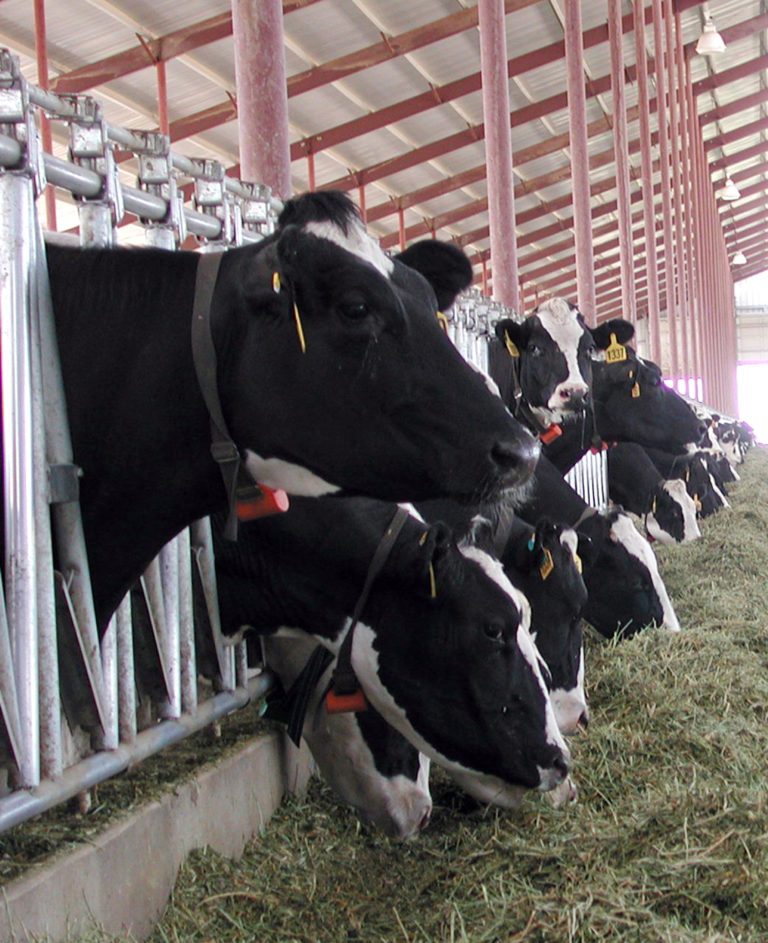



Selecting dairy replacements based on heat stress
With heat stress increasingly becoming a part of life in places not historically hot, there is a need to determine which cows are best suited to deal with the warmer temperatures, said Daigle, Ph.D., an animal welfare specialist in the Texas A&M Department of Animal Science in the College of Agriculture and Life Sciences.She is leading a project to collect data on the productivity and behavioral phenotypes of dairy cows regarding heat tolerance. Titled “Creation of a Database Designed to Promote Dairy Cow Welfare Using Non-invasive Phenotypic Indicators of Heat Stress,” the project is funded through a U.S. Department of Agriculture National Institute of Food and Agriculture’s Agricultural Genome to Phenome Initiative grant.
The initiative is developing the database management strategies needed to facilitate genetic selection for cows that cope better with heat stress. The team includes Scott Crawford, Ph.D., director of the Statistical Consulting Center in the Department of Statistics at Texas A&M University; Brenda Murdoch, Ph.D., associate professor, Department of Animal, Veterinary and Food Sciences, University of Idaho; and Barbara Jones, Ph.D., assistant professor and Southwest Regional Dairy Center director, Tarleton State University.
“We will try to find those cows that can tolerate heat stress and then determine what their behavioral or physiological differences are,” Daigle said. “We need to better understand the variability of the impact that heat stress has on cow productivity and behavior. We don’t fully understand the breadth and depth of how they manage heat stress, so we will be looking for indicators of individuals that are better at coping with heat stress.”
Accounting for a changing climate
The changing climate is likely to impact dairy production because dairy producers in historically temperate regions may not have sufficient cooling infrastructure, Daigle said.
The location and intensity of recent heat waves in North America has highlighted the need to develop nationwide heat abatement and genetic selection strategies to mitigate heat stress, she said. Further, cows can still experience heat stress even when provided with cooling, so identifying cows that will thrive in the new climate paradigm is important.
“Texas is a good place to study the short- and long-term impacts of heat stress because the knowledge generated here can inform operations in historically cooler environments,” Daigle said. “We have these crazy weather patterns that force us to be flexible in what kind of animals we use, where we use them, and the strategies we use to select the next generation.”
High tech already in place on dairies

Daigle said her discipline of animal welfare requires the use of body-mounted sensor technology because manually collecting behavior data is labor-intensive, especially when combined with production and physiological variables.
The dairy industry is already relatively high-tech, she said. Dairy producers are already using multiple types of software or technology simultaneously to collect data that relates to their cows’ productivity. By letting dairy producers anonymously contribute information to a database, Daigle’s project paves the way toward a much more robust type of analysis of a large dairy cow population.
“The cows wear a lot of technology, so a lot of information is being collected from every animal all the time,” she said. “What can we understand better with this information we get through the automated process? This project will help us identify behavioral phenotypes of cows that combine the body-mounted sensor technology with reproductive management software and productivity metrics.
“Essentially, producers will be able to work with their own animals to identify ones that are susceptible to heat stress,” she said. “And if we develop an online website where people can share and upload their data, it can inform our understanding of heat stress and increase our ability to develop a more robust approach to genetic selection efforts.”



